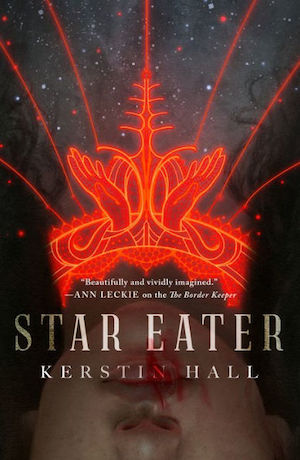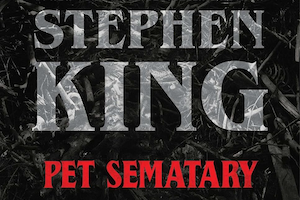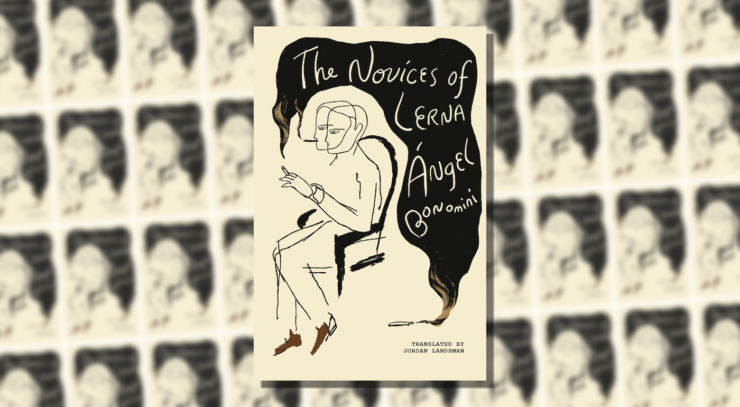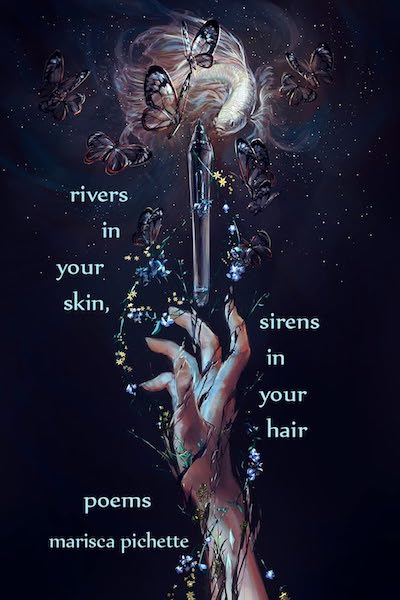Welcome back to Reading the Weird, in which we get girl cooties all over weird fiction, cosmic horror, and Lovecraftiana—from its historical roots through its most recent branches.
This week, we’re reading Elizabeth Bear’s “On Safari in R’lyeh and Carcosa With Gun and Camera,” first published in the November 2020 on Tor.com. Spoilers ahead—but read it for yourself first.
“Greer,” said Roberts, “have you noticed that those are a lot of moons?”
Greer Griswold isn’t our narrator’s real name, but let’s go with that. She and Michael Roberts are hunkered down on a strange planet, under an alien sun, surrounded by non-Euclidean geometry and monsters that (hypothetically) want to eat their faces, and, though she won’t admit it to Roberts, Griswold knows she’s to blame. She was the one who took the online DNA test and got curious about an odd finding. Not that Roberts hadn’t gotten plenty curious too.
But to start at the beginning. Griswold is 52, never married, no children, birth parents unknown, adoptive parents dead, a tenured professor of physics at an unnamed New England university. She’s a loner and comfortable with it; still, she’s starting to hope she isn’t alone in the world. Hence, the DNA test.
Hers is the usual New England mix, plus a heavy dose of neanderthal. But there’s that one line: 10.2% unknown. Curiosity being her defining characteristic, Griswold consults with geneticist friend Roberts. At first he thinks it’s a joke—how could 10% of her DNA not even match the human genome? Then he remembers hearing about a failed dissertation at Miskatonic claiming variants missed by the Human Genome Project. He’ll look it up.
What Roberts finds makes him eager to visit the dissertation author, Albert Gilman of Cape Ann, Massachusetts. Griswold accompanies him. Gilman ignores their knocking at first, then speaks through an intercom. He doesn’t want to discuss his research, but Roberts tells him that Griswold’s DNA testing showed results similar to those of Gilman’s subject. Gilman’s so sorry. His subject was himself.
Days later Griswold receives an envelope from Gilman, containing a map, impenetrable notes, and a Post-It reading “Good luck, Dr. Griswold. By the time you get this, I’ll be gone.” Fearing Gilman intends suicide, Griswold rushes to his home. The front door’s open, the place empty. Among tumbled bedclothes, she finds what looks like the shed skin of an enormous snake. She also copies files from his computer, including a private blog and photographs that almost make her regret her curiosity. Yet, isn’t it always better to know?
She shows Roberts the photos, selfies of Gilman that show him gradually turning into something… batrachian. The map’s of Martha’s Vineyard; X marks a spot not far off the wilderness preserve on the island’s south coast.
Over Thanksgiving break, the two head to the Vineyard and tramp into the preserve. There they find an ancient jetty projecting into the Atlantic. They climb the spit to its apex, a basalt platform incised with a six-pointed star and an inscription in Latin: Fer corpus meum animumque mecum nunc Carcosam. When Griswold reads the words aloud, the world drops out from under them. Always translate before intoning: the script reads “Come with me, body and soul, to Carcosa.”
Carcosa has a sick-yellow sky and black stars, and topography and architecture discombobulatingly different from Earth’s rules. Black moons seem to bob in mid-atmosphere. A flock of black silhouettes rises from the distant horizon and flies toward them, incredibly fast. The pair start looking for shelter. A—man?—appears: naked, with rubbery black skin and slit-pupilled eyes of leonine gold. Oh, they’re here by accident? He’s amused: That explains why they’ve come without guns and stand shelterless while byakhee approach. Never mind: Rising twin suns disperse the byakhee. After smelling Griswold’s “provenance,” the man explains that there are bonds of hospitality between her people and the Carcosans—their gods are related.
Buy the Book


Star Eater
He shows them the way back to the Vineyard and advises “lost scion” Griswold to seek her family farther south than the basalt causeway. In other words, in the ocean itself.
Interdimensional travel takes a heavy physical toll. But after securing rooms in an Edgartown hotel and consuming enormous dinners, the pair recover enough to start planning return trips to Carcosa, this time with GoPros and guns. That night, Griswold hears scratching at her balcony window. It’s a pebbly-necked creature with kelp-green hide—Albert Gilman, very much alive. Next morning she tells Roberts that Gilman’s invited her to meet his—their—people, using a talisman that will allow her to breathe water and withstand enormous pressure. If Roberts will wait for her, she wants to go.
Roberts will wait.
That night Griswold dives with Gilman. The They arrive at last at a glorious undersea city filled with sociable batrachian people who surround Griswold, who are interested in her, who want her to join them. Their good intentions notwithstanding, the social crush overwhelms Griswold, and she flees back to the surface.
Gilman follows. She tells him that if she hasn’t ruined things, she’d like to talk to him again. Sure, he says. As much as he’s come to prefer the community below to humans, he’s missed being around scientists.
At the hotel, Roberts welcomes her back. Griswold reflects that maybe she doesn’t quite belong anywhere—but she’s lucky to have found an inexhaustible research subject. How many physicists can travel to the stars, pioneering new fields of interdimensional cosmology? She’s found family, too, when she’s ready to go to them. If she’s ever ready. On the other hand, maybe she’ll become the first frog-people visibility activist.
Meanwhile, being tougher and longer-lived than humans, she’ll continue to travel to Carcosa and test hypotheses about byakhee and gateways. Firefights on alien worlds against flying abominations are now all in a day’s work for her and Roberts.
And they’ll be just fine.
What’s Cyclopean: Non-Euclidean geometry rears its head! Also a gambrel roof, and batracian (batrachian?) selfies. In a more original (but still delightful) turn of phrase, the Atlantic is “a planished sheet of titanium” in the rain.
The Degenerate Dutch: Greer is pretty comfortable being a “ pretty basic New England mix” of ethnicities that Lovecraft would have been terrified to associate with New England. And the Neanderthal ancestry sounds “nice,” “all that cross-cultural communication and exchange taking place, all the way back to the Weichselian Glaciation”—another distinctly non-Lovecraftian sentiment. Then there’s that 10.2% undetermined…
Weirdbuilding: A chance to visit two much-discussed but hard-to-visit locations is not to be scoffed at. R’lyeh is quite pleasant this time of year; Carcosa remains slightly incompatible with predictable concepts like “time of year” and “gravity.” Score one for Robert Chambers.
Libronomicon: Greer suggests that the in media res cold open might come from Unfathomable Magazine!: Tales of Adventure Beyond the Stars.
Madness Takes Its Toll: Sometimes it’s hard to tell the difference between indicators of depression, and indicators of incipient metamorphosis.
Ruthanna’s Commentary
Elizabeth Bear says she’s been working on this story since 1989. I first encountered the title and opening in one of her Livejournal “First Lines” posts, somewhere around 2005. So I’ve only been waiting eagerly for 15-odd years—and it’s worth the wait. In fact, I suspect it’s better for it. I can spot the seams between the amusing Mythos riff implied by the 31-year-old title and opening, and the deep dive into questions of what destiny is written in your genetics, and what parts of your nature transcend that inheritance—finally offered by an author who’s more than grown into her talent (and written several excellent Lovecraft riffs in the interim) in 2020.
Even just as a Lovecraft riff, the story works well, and includes a nice handful of “Spot the Reference” items. Beyond the obvious Deep Ones and byakhee, I’m pretty sure that’s Nyarlathotep helping them out of a wrong turn in Carcosa. Gambrel roofs are always bad news, and indeed so is algebra (which doesn’t come up again after the opening). Bonus points for actually describing what’s unnatural about alien geometries—octagons indeed are not supposed to tessellate. I’d feel pretty queasy if I saw them Eschering at me.
But the conversation goes deeper. (Sorry.) Greer is an anti-Lovecraftian protagonist, reacting at every stage with unapologetic curiosity, never deciding that it would be better not to know. No attraction-repulsion here, and no fatalist angst; fear would be a waste of time. Her reaction to a universe incomprehensible (and potentially antithetical) to the human mind is a scientist’s delight at a line of study that’s unlikely to hit a dead end any time soon. Her considered reaction to her impending transformation is “I’m going to be the first frog people visibility activist. You see if I don’t.” (Plus a bit of likewise-scientific delight at the thought of brandishing claws at misogynistic colleagues.)
It turns out some people aren’t satisfied with wonder and glory. Greer’s ancestry doesn’t change who she is, fundamentally, either that curiosity or her introversion. And the story’s okay with that—compassionate about strangeness and individuality, and supportive of the choice to be yourself in the face of what others assume inevitable. To not have a single place where you fit. You can be glad to know your family and still want some distance, regardless of how welcoming they turn out to be. Though I wouldn’t mind seeing her found the University of R’lyeh, eventually, given that there isn’t one already. Extradimensional geometry is worth a Nobel Prize or two, sure—but surely Woods Hole would appreciate the outpost. And the colleagues.
Speaking of colleagues, Roberts is a great one. Open to interdisciplinary research, and accepting of frog people bearing research programs that involve considerably more, and more hazardous, field work than he was anticipating.
Which brings us, as the story does, back to the dramatic fight against hypothetically-face-eating monsters, and the revelation that the fight is part of a larger, more important, and less inherently-violent task than it seemed at first. This isn’t a story about fighting monsters, but a story about curiosity and learning being worth the monster-fighting.
Something to bear in mind, when the less-pleasant sorts of colleagues rear their heads. Along with the need to always have a GoPro handy when studying questions that might lead in unexpected—perhaps even non-Euclidean—directions.
Anne’s Commentary
Something weird is happening to me with respect to my reading. A couple of weeks ago, we covered Sonya Taaffe’s “Tea with the Earl of Twilight,” set in the alluring urban wilderness of Boston. Coincidentally, or not, I’d that very week finished reading Douglas Wynne’s Red Equinox, set in the alluring urban wilderness of Boston. This week we’re covering Elizabeth Bear’s “On Safari in R’lyeh and Carcosa,” in which our heroes hole up in an Edgartown hotel in the dismal off-season. Coincidentally, or not, I’ve this very week finished reading Robert Harris’s The Ghost, in which our hero holes up in an Edgartown hotel in the dismal off-season. I think Harris’s ghostwriter and Bear’s Griswold must have stayed in the same room, because both remark on how the pulse of the nearby lighthouse keeps them company through the night.
If the next time we read a short story, I’ve simultaneously finished a novel with a highly similar setting, I’ll know some sort of metaphysical convergence is underway, with the third time bound to land me in another dimension, maybe Carcosa, maybe the Dreamlands, maybe Cambridge or MV in the dismal off-season. I think I’d better prepack my GoPro and byakhee repellent. No guns. I don’t hold with the slaughter of interstellar wildlife when a simple spritz of Deep Space Off will do. I suspect that’s what the naked lion-eyed man used to thwart Griswold and Roberts’s pursuers, although where he carried the aerosol can without any pockets, humanity’s not meant to know.
Speaking of the lion-eyed man, I vote Nyarlathotep is the name he doesn’t condescend to give our heroes. Dead black skin, check (assuming Bear’s “rubbery” refers to color as well as texture.) Bald pate and elegant features, check. Gold, cat-slitted eyes, check. Bit of a superior attitude, check, but still willing to deal with humans rather than automatically devour their faces, check. He is missing his usual Pharaoh’s gear or shapeless black robe, but Carcosa gets pretty warm in byakhee swarming season. Also, he wasn’t expecting visitors.
The other likely suspect—very likely in Carcosa—is the King in Yellow. However, Bear’s stranger has nothing yellow about him but his eyes, certainly no tattered robes or maybe-mask of sickly saffron hue. Plus my impression of the King is that he’d rather retain visitors than send them home with faces intact.
Regardless of his identity, the Carcosan stranger is just one of the Mythosian references that make “On Safari” a welcome romp for lovers of the subgenre. Some disdain what they call pastiche, but I’m always happy to read that dear old Miskatonic U is thriving in witch-haunted Arkham, nor do I wince at the word “batrachian.” It has a noble sound, suitable as the name of a Roman emperor or a Y’ha-nthleian princeling.
And speaking of Y’ha-nthlei, I guess that’s the glorious underwater city Gilman and Griswold visit. The title mentions R’lyeh, but that’s in the South Pacific, so it’s presumably a future destination for Bear’s explorers. With the aid of her talisman, Griswold could swim from the Vineyard as far as the deep waters off Innsmouth, I reckon. Alternatively, there could be a R’lyeh-of-the-North off MV. R’lyeh, the Springfield of Deep One municipal nomenclature!
“On Safari” joins the distinguished company of weird tales we can broadly categorize as metamorphosis stories and subcategorize as discovering one’s nonhuman roots, Terrestrial to Amphibious sub-sub-category. Many such tales end with the slide from land to water being more an occasion for celebration than despair for those doing the sliding. Even the protagonist in Lovecraft’s “Shadow Over Innsmouth” comes to view his impending sea-change as a blessing rather than a curse. It’s for those of us stuck on dry ground to view frog-fish-people as monsters, including Lovecraft’s protagonist before he’s reconciled to his genetic heritage.
That Bear’s Griswold quickly adapts to the idea of going deep comes as little surprise. She defines herself by her curiosity. It’s what has led her to physics. It’s what makes her “spit in the test tube” and send it off for genetic testing. It’s what cements her friendship with Roberts, also a curiosity-junky. It’s what will further her bond with Gilman, who misses fellow scientists even in his tight sub-sea community.
What makes Griswold an intriguing character is the tension between her self-identification as a loner and her urge to reach out, to discover connections. I love that she can’t hang around too long with her amphibious relatives because they overwhelm her with their unstinting friendliness. She retains her long-worn spikes—it will take a while for the saltwater to soften them up, and even after it does, the ocean must have room enough for occasional retreats.
And lucky Griswold! She gets not only the vast ocean but vaster interdimensional space, Carcosa as well as R’lyeh! All this and tenure, too. Girl, you better thank that nice Nyarlathotep for pointing you in the direction home, and beyond!
Next week, we continue the tale of what Eleanor did on her summer vacation in The Haunting of Hill House, Chapter 5.
Ruthanna Emrys is the author of the Innsmouth Legacy series, including Winter Tide and Deep Roots. Her short story collection, Imperfect Commentaries, is now available from Lethe Press. You can find some of her fiction, weird and otherwise, on Tor.com, most recently “The Word of Flesh and Soul.” Ruthanna is online on Twitter and Patreon, and offline in a mysterious manor house with her large, chaotic household—mostly mammalian—outside Washington DC.
Anne M. Pillsworth’s short story “The Madonna of the Abattoir” appears on Tor.com. Her young adult Mythos novel, Summoned, is available from Tor Teen along with sequel Fathomless. She lives in Edgewood, a Victorian trolley car suburb of Providence, Rhode Island, uncomfortably near Joseph Curwen’s underground laboratory.














